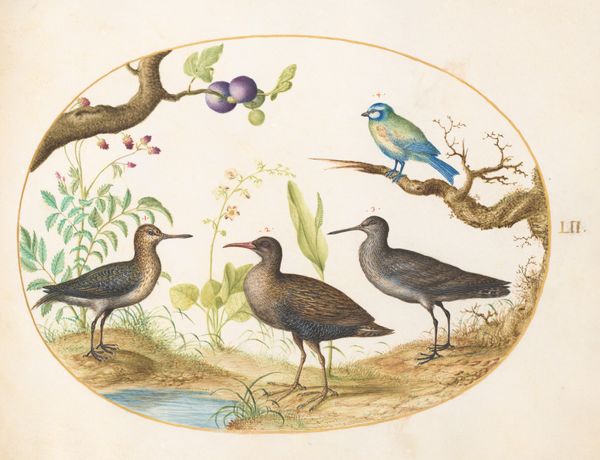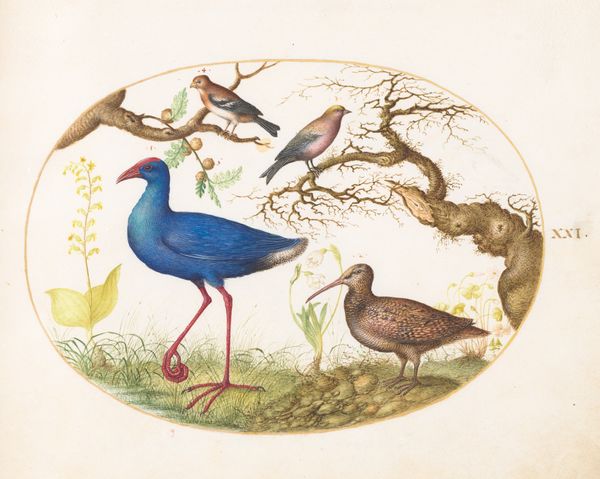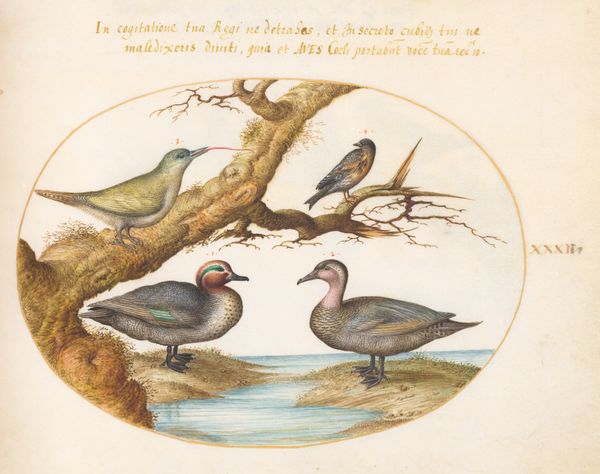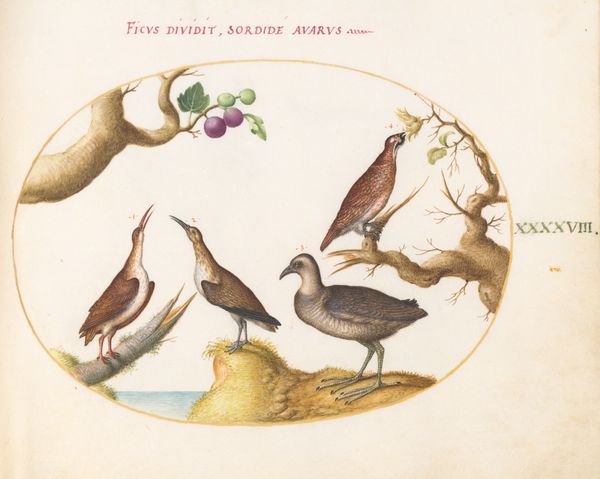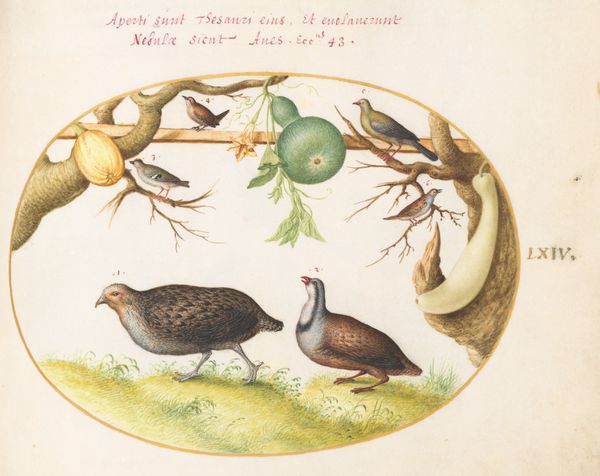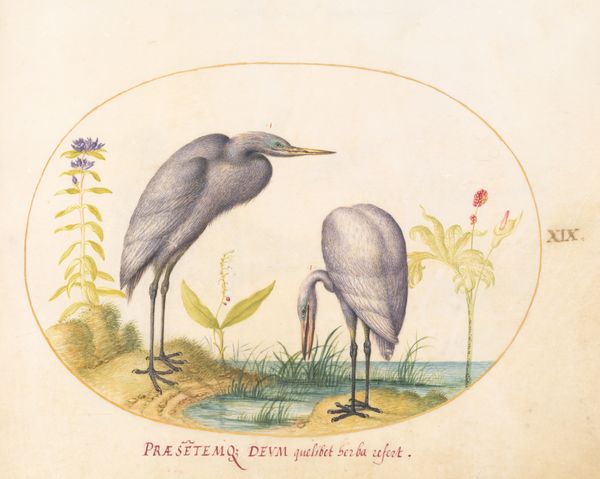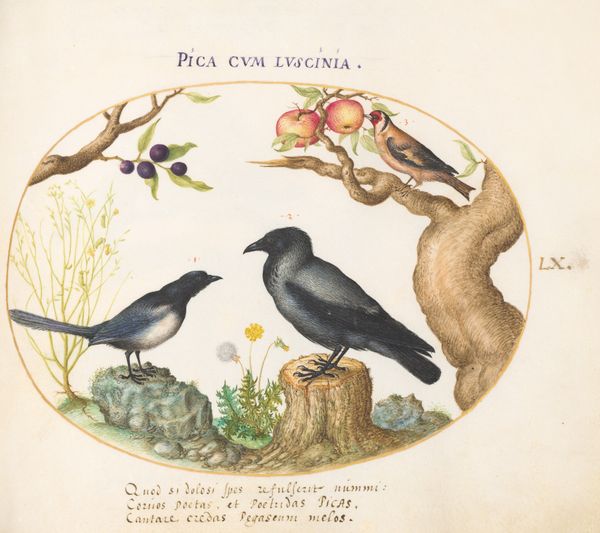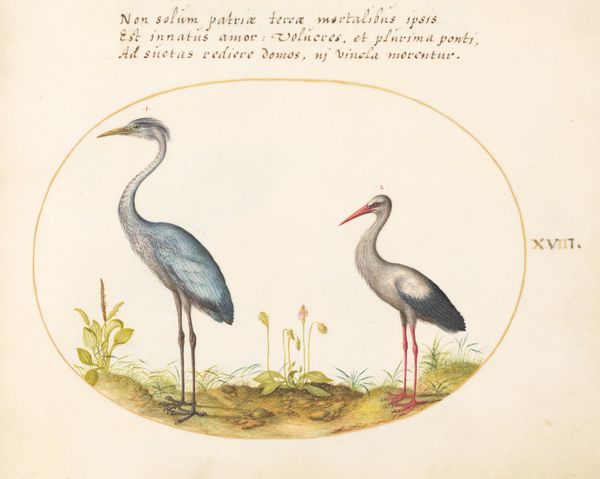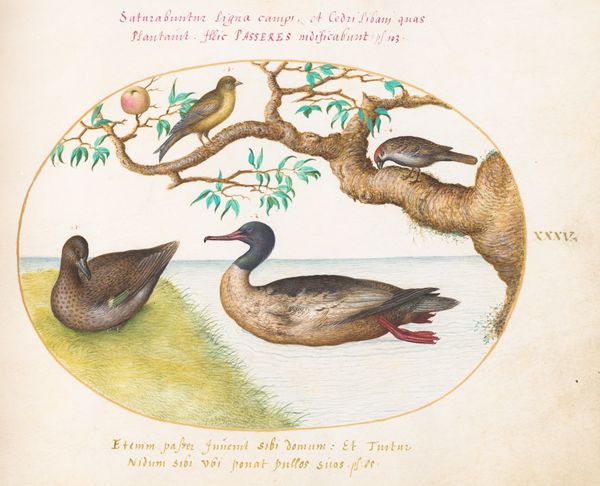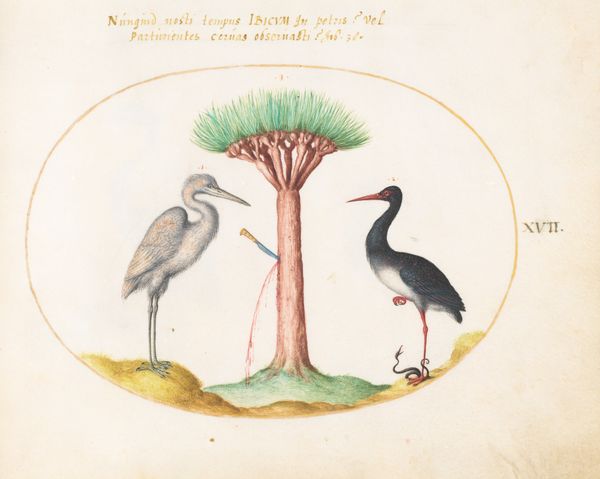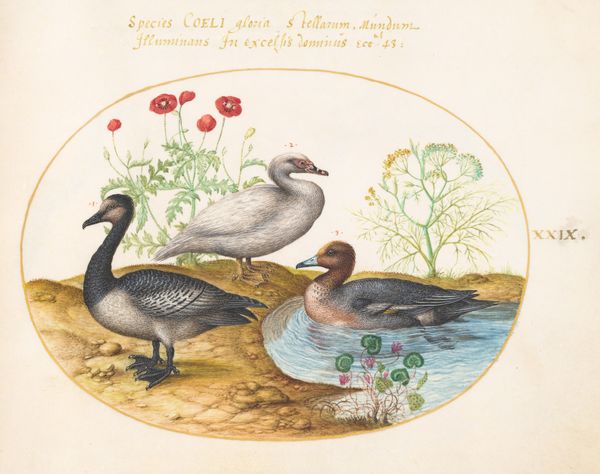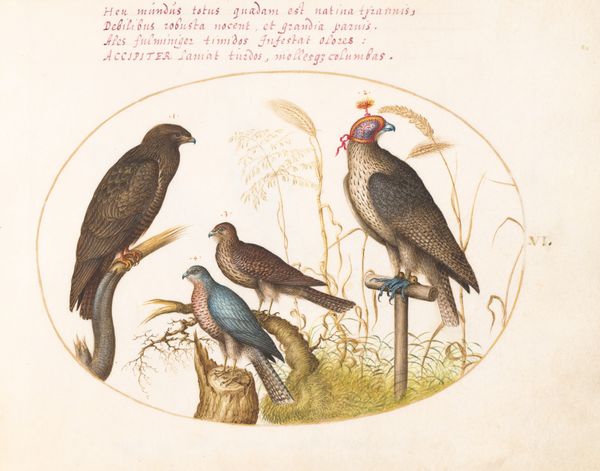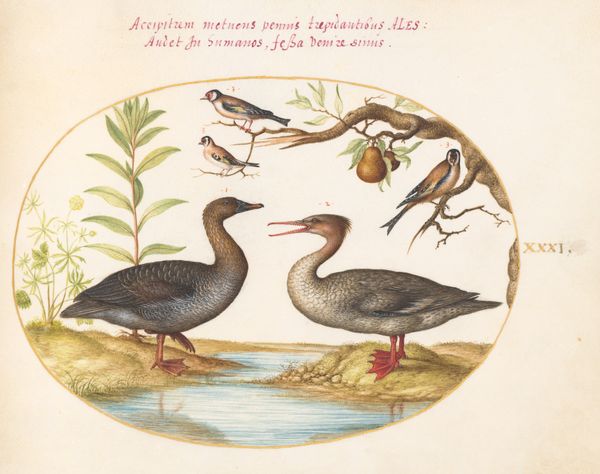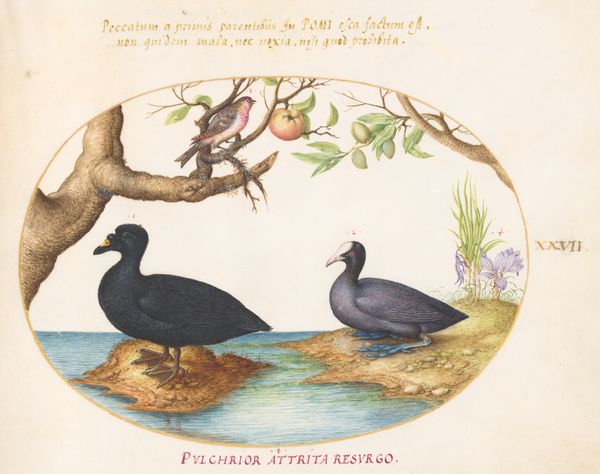
drawing, tempera
#
drawing
#
tempera
#
11_renaissance
Dimensions: page size (approximate): 14.3 x 18.4 cm (5 5/8 x 7 1/4 in.)
Copyright: National Gallery of Art: CC0 1.0
Curator: I’m immediately struck by the stark simplicity and fragile beauty of this image. The delicacy of line, the birds so precisely observed – there’s a stillness to it. Editor: We're looking at "Plate 50: An Avocet with Two Other Birds," a tempera drawing from around 1575-1580 by Joris Hoefnagel, a fascinating moment in the Renaissance. What layers of cultural meaning and social positioning might this artwork reveal to us? Curator: Well, the image clearly situates the birds within an idealized natural setting, which speaks to Renaissance ideals of harmony and balance. But there's also a quiet commentary here, especially given the presence of Latin texts that hint at human influence on the environment and an interrogation about the conditions that make thriving possible. How is power structuring the natural world around these birds? Editor: It’s the avian symbolism that pulls me in. Birds have consistently represented freedom, the soul's journey, communication between realms. How might Hoefnagel be playing with the historical resonance of these symbols here? What do you make of his choice of birds and how they relate to Renaissance thinking? Curator: The avocet, that elegant creature with its upturned beak, could represent aspiration or perhaps a refined, even artificial, understanding of nature given its long neck is exaggerated beyond normal. Then you've got the other two, less obviously distinct, almost blending in; one sits on the branch, another hides at the lower side drinking by the creek: what are we to make of that pairing and who benefits? Is this just another depiction of wildlife, or are there more overt colonial and imperial interests at work? Editor: Hoefnagel does seem intent on presenting nature for an intellectual audience, aligning perfectly with the rise of scientific observation during the Renaissance. The meticulous detail, especially the play of light on their feathers, suggests a desire for classification and knowledge, but in itself, it offers insight into the human fascination with the natural world. There's a power in naming, in categorizing. I feel drawn into this delicate depiction with an almost melancholic affection. Curator: And isn’t melancholia such a pervasive mood during that period? Perhaps what Hoefnagel gives us is less a straightforward documentation and more an encoding of complex, layered anxieties about humanity’s place in this intricate web. It certainly invites ongoing questioning of these dynamics. Editor: I concur. We see through symbols the reflections of cultural memory, allowing it to echo through time.
Comments
No comments
Be the first to comment and join the conversation on the ultimate creative platform.
